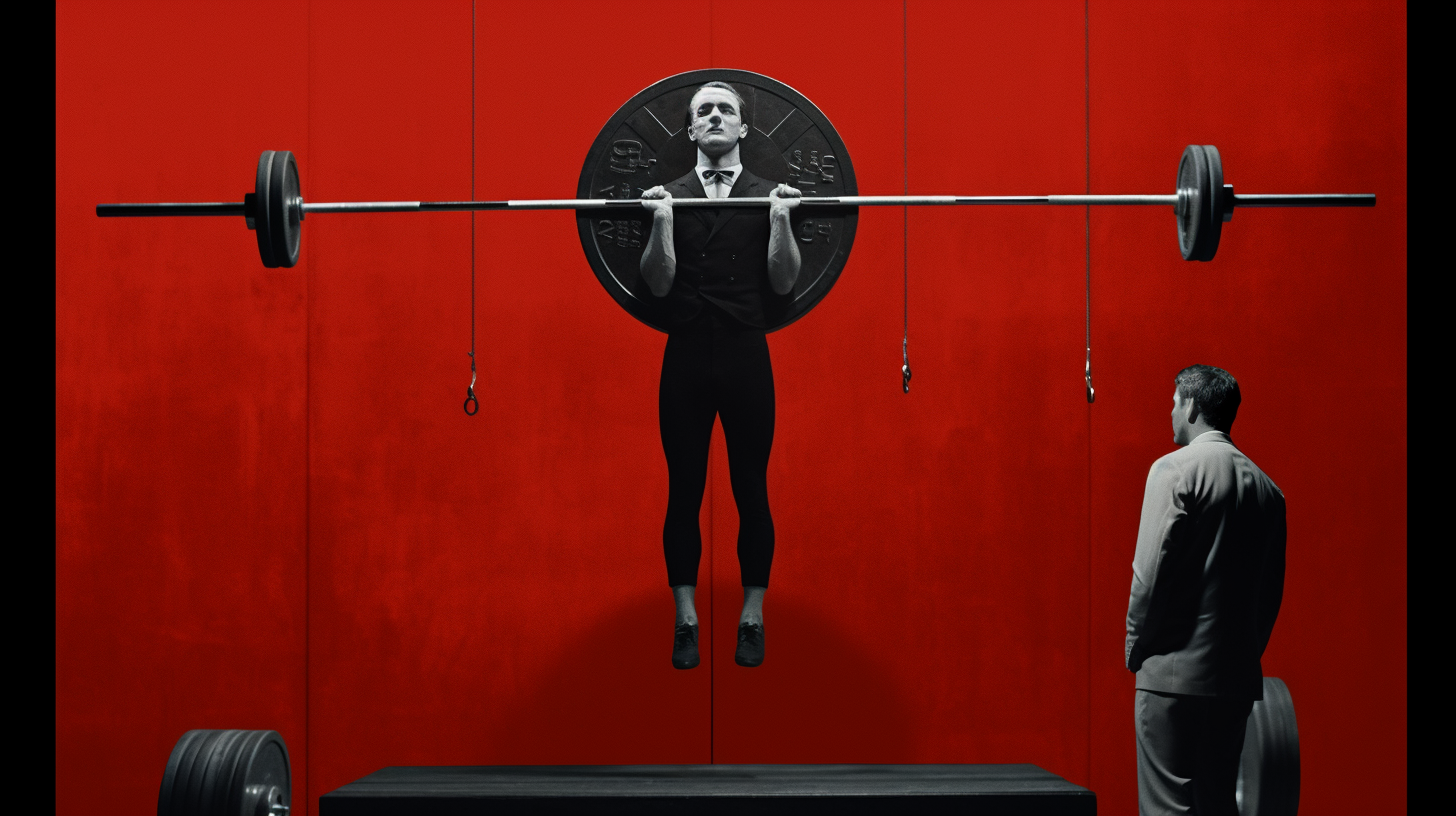Does Building Muscle Increase Metabolism? (Let’s Put an Exact Number on It)
Have we all been lied to? Does building muscle increase metabolism — and if it does, how much are we talking about, exactly? Let's find out here.

“Muscle burns more calories than fat!”
Um, OK, but 2 questions:
- If so, how come weight loss never feels easier with increased muscle mass?
- (And perhaps on a related note) Just how much exactly does building muscle mass increase metabolism?
We’d naturally arrive at the answer for question #1 by addressing #2 … so let’s start there.
Does building muscle increase metabolism?
Well, actually, we’d need to go just a little further back — to whether building muscle increases metabolism.
See: at first glance, it seems glaringly obvious that all those #gains would help you morph into a calorie-melting furnace. Every kg of lean body mass (LBM) burns 13 calories at rest (i.e., 1 lb. burns 6 calories).
Fat, on the other hand? 1 kg of it burns 4 calories at rest (i.e., 1 lb. burns 2 calories).
Meaning if you were to "replace" 1 kg of fat mass (FM) with LBM, you’d essentially be increasing your resting metabolism by 9 calories (math: 13 – 4 = 9).
But here’s the thing.
Your body doesn’t operate in a vacuum, so to speak
Realistically speaking, it’s unlikely that you’d do a one-to-one “swap” between your FM and LBM.
Even if you achieve body recomposition, the Muscle Gained : Fat Loss ratio wouldn't be 1:1. It might be 1:2. Or 2:1. Those are all theoretical — but possible — ratios.
And, besides, unless you’re on a doctor’s prescribed bed rest (and you truly don’t move a cm), resting metabolism isn’t the only manner through which your body expends energy.
That’s because your total daily energy expenditure (TDEE) is broken down into the following:
👉 Resting metabolism (or basal metabolism)
👉 Thermic effect of feeding (TEF)
2️⃣ Active energy expenditure (active EE)
👉 Exercise
👉 Non-exercise activity (NEAT)
Let's assume that your TEF remains the same even as you build muscle and/or lose fat, for simplicity's sake.
Psst: does eating more meals increase your metabolism?

So, at this point, a quick recap: we know that building 1 kg of muscle will likely increase your non-active EE by 9 calories if (and only if) you lost the equivalent in FM. But we haven’t talked about your active EE yet.
And, as it turns out, energy expenditure scales linearly with body mass for a given activity level — regardless of whether it's FM or LBM.
A general guideline is a 1% increase in body mass results in a 1% increase in active energy (note: activity levels remain constant).
Finding all that a little too vague? Here are some quantifiable numbers to help you out.
Most people have an active energy expenditure of about 2.2 to 13.2 calories per kg (or 1 to 6 calories per lb.). So, let’s say you weigh 60 kg:
- Sedentary: 2.2*60 = 132 calories (active EE); gaining 1 kg = 134 calories (active EE) » Increase: 2 calories
- Active: 9*60 = 540 calories (active EE); gaining 1 kg = 549 calories (active EE) » Increase: 9 calories
- Extremely active: 13.2*60 = 792 calories (active EE); gaining 1 kg = 805 calories (active EE) » Increase: 13 calories
*For those wondering about the math, here’s the equation for calculating new active EE accounting for an increase in 1 kg muscle mass:
Ah, OK, after all that mind-boggling math, here's the bottom line.
Building muscle will likely increase your metabolism, but …
The degree of the increase can differ quite a bit, depending on the following factors:
- How much you weigh
- How much LBM you gain and how much FM you lose (i.e., how your body composition changed)
- Your activity level
And TBH, based on the numbers you’ve seen so far, you might have felt a little … disappointed. Muscle mass has always been lauded as a magical “calorie furnace” that’ll make all your wildest weight loss/fat loss dreams come true.
But “9 calories” and “13 calories” (and this is when you’re extremely active) are nothing to shout about — even when you add them together. 22 calories.
That’s like 10 raisins. 👀 *bombastic side eye*
Sure, that’s theoretically near the maximum of what someone would experience in terms of a metabolism increase because of a 1 kg gain in muscle mass. So, a 10 kg gain in muscle mass would, once again, theoretically “ramp” your metabolism up by 220 calories.
It adds up. But it's likely nowhere near how much you thought gaining LBM would increase your metabolism (maybe in the thousands?)
Muscle mass is not a “metabolism hack”
This, in turn, helps us answer question #1: “How come weight loss never feels easier with increased muscle mass?”
It's because the increase in metabolism isn't all that much, to begin with. And to make matters worse, research shows we tend to eat more and move less after exercise — a twofold blow to our efforts to achieve a calorie deficit.
Now, before you take all this to mean that there’s no point in:
- Trying to build muscle mass, or
- Exercising, or
- Losing fat/weight
Don’t.
Here's a recommendation: instead of viewing muscle mass as a "metabolism hack", see it as a "health hack" instead (with the slight increase in calorie burning as a nice little bonus).
After all, increased muscle mass is associated with the following:
- Lower risk of developing chronic conditions, including heart disease, type 2 diabetes, and certain types of cancer
- Better quality of life (especially for seniors)
- Improved emotional and mental well-being
- … and more
Now that we’ve (hopefully) made an irresistible case for building muscle mass, you’re likely raring to go.
But just how can you get started? Two words: strength training. And if you need help on that front — planning your workouts and learning how to perform certain exercises safely and effectively — check out GymStreak.
This smart, AI-powered personal trainer app will give you everything you need to start your #gains journey.
See it in action below:
Workout Programming + Nutrition Tracking, Off Your Hands
*sigh of relief* We'll guide you through it all — step-by-step. Just download the app, and you'll be making progress toward your dream body like never before.
References
FoodData Central. https://fdc.nal.usda.gov/fdc-app.html#/food-details/168165/nutrients. Accessed 4 Aug. 2023.
Paravidino, Vitor Barreto, et al. “Effect of Exercise Intensity on Spontaneous Physical Activity Energy Expenditure in Overweight Boys: A Crossover Study.” PLOS ONE, vol. 11, no. 1, Jan. 2016, p. e0147141. PLoS Journals, https://doi.org/10.1371/journal.pone.0147141.
Thomas, D. M., et al. “Why Do Individuals Not Lose More Weight from an Exercise Intervention at a Defined Dose? An Energy Balance Analysis.” Obesity Reviews : An Official Journal of the International Association for the Study of Obesity, vol. 13, no. 10, Oct. 2012, pp. 835–47. PubMed Central, https://doi.org/10.1111/j.1467-789X.2012.01012.x.
Wang, ZiMian, et al. “Specific Metabolic Rates of Major Organs and Tissues across Adulthood: Evaluation by Mechanistic Model of Resting Energy Expenditure1234.” The American Journal of Clinical Nutrition, vol. 92, no. 6, Dec. 2010, pp. 1369–77. PubMed Central, https://doi.org/10.3945/ajcn.2010.29885.


